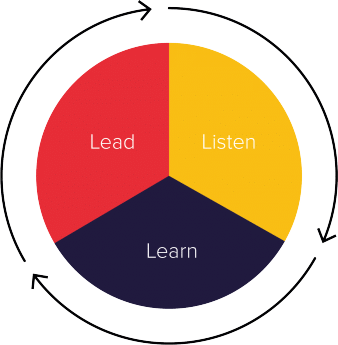As part of my consulting practice, I work with several global companies on their diversity, inclusion, and women’s leadership efforts. I’m often asked by executives—men and women—how they can be more gender-intelligent at work. Gender intelligence (GI) is about understanding, recognizing, and valuing the differences between men and women. And it’s about appreciating those differences as strengths, which are highly complementary.
Gender intelligence is what I would call a gateway leadership skill. It is one of the skills, along with cross-cultural and cross-generational intelligence, that provides the foundation for effective global leadership and strategic influence.
“Gender intelligence (GI) is about understanding, recognizing, and valuing the differences between men and women.”
Like all skills, you need thoughtful, intelligent practice in order to become fluent. You can’t just take a seminar or read a book and call it a day. Developing gender-intelligent skillsets and practices makes all the difference in one’s career, especially as you progress through management and into leadership roles.
Gender Intelligence 101
When you start to view the differences between men and women through the lens of strength, you can leverage them to your competitive advantage. Many people are aware of the concept of GI. Yet how to implement it on a daily basis, at the individual level, has remained elusive.
Nevertheless, it is essential to get this right if you want to build diversity and inclusion within your company.
Step 1: Read & reflect
If you want to better understand the concept of GI, you need to start with the source and the pioneer who literally coined the phrase and wrote the books on strategic GI, Barbara Annis.
Annis has strategically brought GI into companies in every industry. Her lessons learned as well as her exploration of our most common pitfalls and blind spots are invaluable. My favorite book of hers for those just starting to explore GI is Results at the Top: Using Gender Intelligence to Create Breakthrough Results.
Another excellent and timely book, especially for men who want to engage with these issues, is Joanne Lipman’s That’s What She Said: What Men Need to Know (And Women Need to Tell Them) About Working Together.
Lipman is a veteran journalist and editor who packs a ton of relevant research and insights into an entertaining and practical read. Both books are incredible ways to launch and build a broader conversation on how we can all be more gender-intelligent at work.
I like working with books like these first because it allows people time to read, absorb, and reflect on their own and then come together to discuss and deepen their understanding.
Step 2: Practice
If you want to become better at something, you need to practice. Oftentimes, when it comes to gender intelligence as well as cross-cultural intelligence, I see many companies overcomplicate things. So much so that employees rarely remember what they learned in their diversity training, and they have no clue how they are actually supposed to implement the guidance they have been given.
The key is to focus on a few simple daily practices that can have a cumulative effect over time.
Gender-intelligent leadership: A continual cycle of self-awareness & improvement
Gender-intelligent leaders, as I’ve written about in the past, do three things differently. They listen, learn, and lead through a gender-intelligent lens.


Listen more, speak less
Communication is one of the most common blindspots between men and women at work. Failures in communication often lead to misunderstandings, confusion, pre-judgment, people shutting down, disconnecting, and resentment.
One way to counter this is to focus on active listening and lessening—as much as possible—the amount you interrupt your colleagues.
I’ve written about this before, and it’s incredible to me how often we are blind our own behavior in day-to-day interactions at work. And when it comes to speaking over people—and speaking for lengthier amounts of time—men do this far more often than women.
As The New York Times reported last summer, “Academic studies and countless anecdotes make it clear that being interrupted, talked over, shut down, or penalized for speaking out is nearly a universal experience for women when they are outnumbered by men.”
Further, as Forbes reported this past January, numerous studies “have shown that men interrupt women at work nearly 33% more and also speak more when women are in the room as a projection of their dominance and power.”
Often, this is not intentional. But it is important to become aware of it and find new, positive ways to reduce this in meetings. Companies that do so have greater success in their engagement and retention efforts because people—men and women alike—finally feel listened to and heard.
“Often we are blind our own behavior in day-to-day interactions at work.”
Learn
Gender-intelligent leaders learn differently and continually. They are the founders, board members, and C-suite leaders who actually come to the diversity and inclusion training and participate with their employees. They encourage and help lead new learning throughout the company, because they themselves are always learning, inquisitive, and open to new ideas.
As leaders, they ask themselves and encourage their employees to ask, “Am I being gender-intelligent about this?” And they constantly look for ways to improve.
Gender-intelligent leaders are lifelong learners and encourage that in others at every level. When they don’t know or understand something, they ask. They seek explanations from men and women, demonstrating humility and curiosity. They also consistently seek out constructive feedback, not just in how they interact at an interpersonal level, but also in what they put into writing—which is the bulk of business communication.
One of the best tools that I’ve used and recommend for building GI on a practical level is Textio, which flags gender-biased language as you are typing.
Lead
Finally, gender-intelligent leaders lead differently. They lead with respect, humility, and by example—word and deed. To build gender-intelligent leadership skills, you begin by being more aware of what influences you on a daily basis, and how we are all complicit, to varying degrees, of reinforcing negative stereotypes.
When we see or hear stereotypes, we should call them out and correct them. It is amazing to me, when you really start paying attention, how often these stereotypes come up in casual conversation. They may come up in emails, memos, or various other communications and, all too often, we just let them go. Especially senior-level men and women.
If you aren’t willing to call out and correct something when you read it or hear it then you have failed in that leadership moment. This not only applies to gender but also to the stereotypes perpetuated around race, ethnicity, age, socio-economic status, education, etc.
There are ways of correcting negative stereotypes at work appropriately, without getting fired or provoking your coworkers. One that I’ve found particularly effective is to start with your own sphere of influence—i.e. the people who work for you or with you, and who know and respect you. Finding the right time and place to do this one-on-one, rather than in a large group setting, is usually best.
However, there have been times when the stereotype is so egregious that I’ve had to call it out and correct it on the spot, in front of everyone, knowing full well the potential consequences of my actions. I’d rather sleep well at night knowing I did the right thing than be silent and allow something so offensive to perpetuate.
Finding strength in difference
Regardless of how you do it, we all need to do more to correct stereotypes that are pervasive and corrosive. And we also need to do more to underscore the unique strengths of every individual and their contributions—men and women alike.
As Barbara Annis famously likes to say, “Men and women are different. Get over it.” These differences between men and women—which are first informed by nature and then influenced by our individual experiences—are a good thing. We complement one another, especially when we understand and appreciate those differences on a gender-intelligent level.
There is much work still to be done on the gender intelligence within companies and throughout leadership ranks. This work starts with each of us, every day, in the big and small ways we interact with one another. It starts with gender intelligence being an imperative that senior leadership embraces and demonstrates in all that they do and say. It also starts with every employee at every level—not just new hires, HR, Women’s Leadership club members, designated “high potentials,” or those who are leading diversity and inclusion initiatives.
Everyone can be more gender intelligent if we have the courage to listen, learn, and lead differently each and every day. So let’s get over it and on with it already.
“Everyone can be more gender intelligent if we have the courage to listen, learn, and lead differently.”
Want to further develop your skills as a gender-intelligent leader?
Download a brochure to find out how diversity and leadership development are built into degree studies at Hult International Business School.
If you’re a current Hult student or alum, you can join Cari in her Women’s Leadership & Gender Intelligence elective course at Hult San Francisco on June 8-11, 2018. Check mycourses.hult.edu for more information and to register, or contact Cari directly: Cari.Guittard@faculty.hult.edu
Make the most of what your career has to offer with a Masters in International Business from Hult. To learn more, take a look at our blog Top 10 questions to ask when looking at business schools, or give your employability a huge boost with an MBA in international business. Download a brochure or get in touch today to find out how Hult can help you to explore everything about the business world, the future, and yourself.



